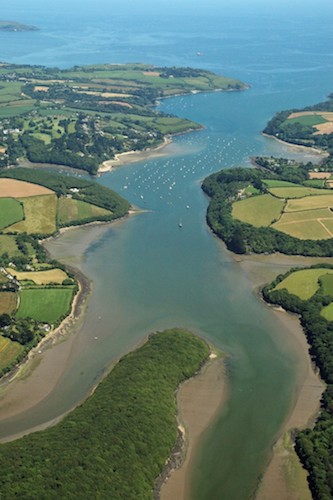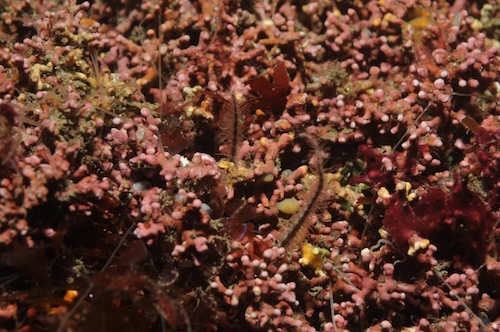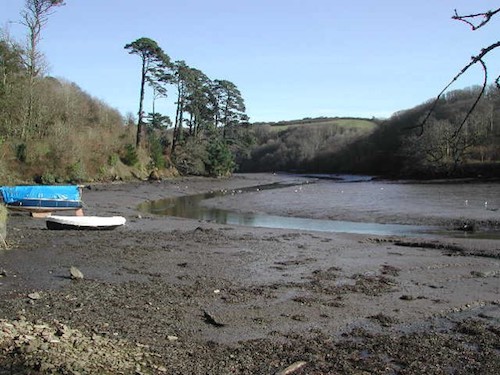..... a dynamic ever changing habitat, shaped by wind and tide.
The wild weather we are having now has prompted me to write something about the dynamic nature of an estuary and the effect of the wind. Estuaries can vary widely in character depending upon their aspect and exposure to prevailing winds. The Helford Stretches from East to West, it’s wide open mouth leads out onto Falmouth Bay, exposed to winds from the East and to a lesser extent the West. ‘When the wind is in the east, 'tis neither good for man nor beast’ is a well-known country saying and certainly no one would want to be out on the Helford when a good Easterly is blowing!

A big swell can develop and our lovely tranquil Helford can look positively wild! Now we see the power of the sea in our backwater, moving tonnes of sand and gravel up onto Trebah beach – a few days of Westerlies can reverse this action, sweeping it off down to bedrock too, nothing stays the same for long! It is regularly a subject of discussion at out Helford Marine Conservation Group Advisory Meetings. We marvel at changes wrought by nature.
Under the water marine life has adapted to this violent change and is remarkably resilient as you can see from this picture taken of the Maerl bed and occupants. 
Further up the Estuary all is quiet and fine sediments can deposit into mud banks creating a warm shallow environment for invertebrate life and rich pickings for the wading birds. This variety of habitat and life is what makes the Helford worthy of the status of Special Area of Conservation, it can be taken for granted by us all but don’t, because it really is special. 
Published: Feb 2017
Author: HMCG Coordinator Sue Scott
